Are you a reptile lover and looking for a new addition to your collection? If so, the Leopard Gecko Lemon Frost might be the perfect fit for you.
This elegant species has captured the hearts of many with its captivating beauty and unique characteristics.
In this blog, we will give you an in-depth overview of the Gecko Lemon Frost; from its physical characteristics to its genetics and feeding recommendations, we also cover some of the common health issues and concerns related to this morph, as well as tips on how to properly handle and interact with them.
So whether you’re a seasoned reptile keeper or just starting, keep reading to learn more about these catchy creatures!
What Is A Leopard Gecko Lemon Frost? A Gecko Lemon Frost is a captivating morph with vibrant yellow and white markings. This unique variation is prized among gecko enthusiasts for its striking appearance, making it a sought-after and visually appealing reptile in the world of exotic pets.

- Brief Overview Of Leopard Gecko Lemon Frost
- Lemon Frost Leopard Gecko Genetics Simplified
- Captivating Beauty: Lemon Frost Leopard Gecko Characteristics
- Lemon Frost Coloration In Leopard Gecko Morphology
- Physical Characteristics Of Lemon Frost Gecko
- How To Identify A Genuine Lemon Frost Leopard Gecko
- Breeding And Genetics Of The Lemon Frost Morph
- Feeding And Diet Recommendations For Lemon Frost Geckos
- Housing And Enclosure Setup For Lemon Frost Geckos
- Common Health Issues And Concerns For Lemon Frost Gecko Morphs
- Care And Husbandry Considerations For Leopard Gecko Lemon Frost Morphs
- Handling And Interacting With Lemon Frost Leopard Gecko Morphs
- FAQ About Leopard Gecko Lemon Frost
- Final Thought 💭
Brief Overview Of Leopard Gecko Lemon Frost
The Lemon Frost Leopard gecko, also called Super Lemon Frost, is a sought-after morph in reptile breeding.
This morph boasts a striking coloration, featuring a vibrant lemon-yellow body with white, black, or yellow spots. It was initially developed by reptile breeder Steve Sykes through selective breeding.
The Lemon Frost gene is recessive, requiring both parents to carry the gene for offspring to display the trait. This morph is highly valued for its unique and stunning appearance.
Lemon Frost Leopard Gecko Problems
Lemon Frost leopard geckos may have a higher sensitivity to specific health issues, such as overweighting leopard geckos, eye concerns or skin growths.
Certain Lemon Frost geckos might display atypical skin pigmentation, indicating potential underlying health problems.
Observing these geckos for signs of illness or irregularities is important. Regular veterinary examinations and proper care practices are essential for sustaining their wellness. Due to their distinctive genetic traits, Lemon Frost geckos may necessitate specialized care.
Lemon Frost Leopard Gecko Tumor
Lemon Frost geckos, like other Leopard gecko morphs, may develop skin tumors, impacting their welfare.
Genetic factors may influence tumor formation in these geckos, necessitating on-guard monitoring for early detection.
Quick evaluation and treatment by a reptile veterinarian are crucial for managing tumors in Lemon Frost geckos.
Understanding the nuances of tumor development in these geckos is key to effective management and maintaining the health of these unique reptiles.
Super Lemon Frost Leopard Gecko
With intensified coloration and distinct spotting patterns, Super Lemon Frost geckos stand out from regular Lemon Frost geckos.
Breeders seek them for their striking appearance and genetic traits, drawing significant interest in the reptile breeding community.
The sought-after Super Lemon Frost gene is used to breed visually captivating gecko morphs. This genetic trait has the potential to produce new and vibrant gecko variations, making it an essential asset for breeders.
Leopard Gecko Cancer Symptoms
Symptoms indicative of cancer in Leopard geckos encompass abnormal growths, alterations in behavior, or diminished appetite.
Potential health concerns include skin cancer, oral cavity tumors, and other cancerous growths. Early detection is vital for timely intervention and treatment.
Owners must remain vigilant for any abnormalities and promptly seek veterinary care. Understanding these symptoms facilitates proactive health management and medical care, ensuring the good health of these captivating reptiles.
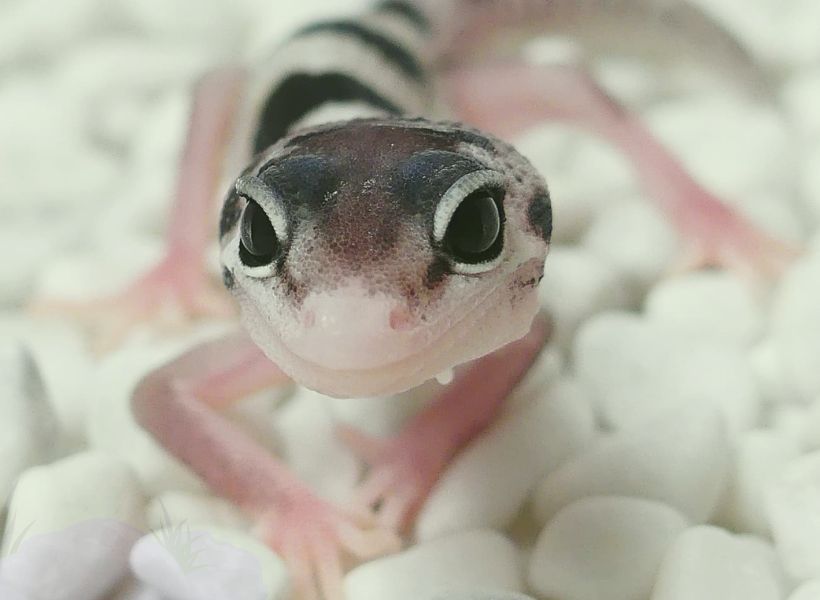
Lemon Frost Leopard Gecko Genetics Simplified
Unraveling the genetic magic behind the captivating Lemon Frost gecko reveals a mosaic of coloration, making it an enthralling subject for reptile breeders.
Studies by evolutionary geneticist Longhua Guo and Leonid Kruglyak at the University of California, Los Angeles (UCLA) have shed light on the single gene responsible for the stunning lemon frost phenotype in Eublepharis macularius.
Further research, as published in PLOS Genetics and Scientific American, delves into the homozygous mutant’s distinct features, igniting interest in the lizard’s DNA and its potential for further study.
Captivating Beauty: Lemon Frost Leopard Gecko Characteristics
The marvelous Lemon Frost coloration in Leopard gecko morphology is a result of the captivating physical characteristics of this morph.
From the unique size and weight to the mesmerizing coloration and pattern, identifying a genuine Lemon Frost Leopard Gecko is a treat for reptile enthusiasts.
Understanding the breeding and genetics of this morph further enhances the appreciation for its captivating beauty and attraction.
Lemon Frost Coloration In Leopard Gecko Morphology
Covering the detailed lemon frost coloration in the remarkable leopard gecko morphology reveals a stunning array of genetic traits.
The lemon frost phenotype, studied by evolutionary geneticist Longhua Guo and his team, showcases unique DNA characteristics contributing to its enchanting appearance.
In a new study published in PLOS Genetics, the lemon frost is a result of a single gene mutation, leading to a striking variation from the wild type.
This typical coloration, resembling the soft hues of a blizzard, captivates gecko enthusiasts and researchers alike.
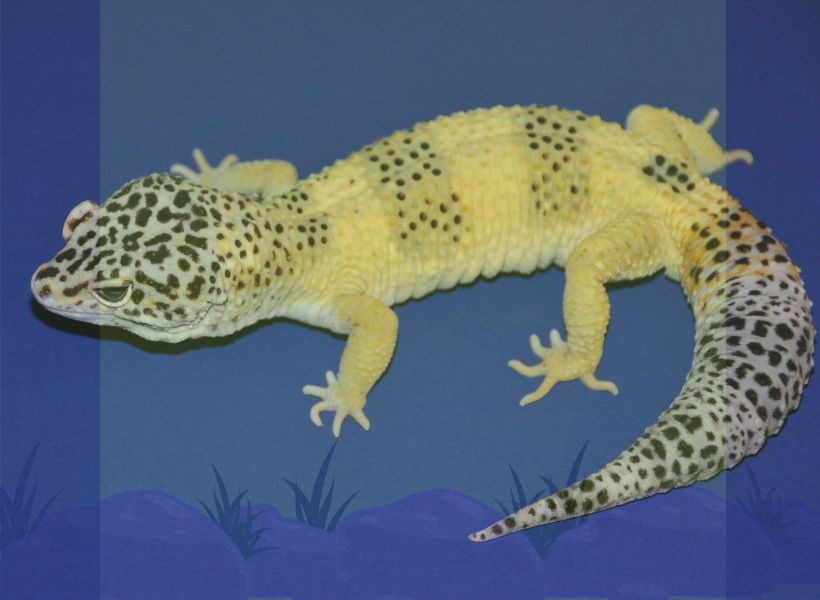
Physical Characteristics Of Lemon Frost Gecko
Lemon frost gecko, known for its captivating beauty and unique genetics, exhibits distinct physical traits.
These geckos typically measure 8-10 inches and boast vibrant yellow and white coloration with a dotted pattern.
Their eyes are a striking contrast of deep black and white. When identifying true lemon frosts, observe their size, color, and eye characteristics.
These physical features make them stand out and have garnered significant attention from reptile followers and breeders alike.
Size And Weight
Leopard geckos, known for their robust bodies, typically weigh between 45 to 65 grams as adults, with an average length of 8 to 10 inches, including the tail.
Female geckos are smaller than males, with slimmer bodies and shorter, thicker tails. Hatchlings are about 3 to 4 inches long and weigh 2 to 5 grams, considered one of the larger gecko species.
Coloration And Pattern
The lemon frost gecko boasts a striking lemon-yellow hue that becomes more vibrant with age.
Proper diet and habitat conditions can further increase their coloration. These geckos often display white cells or black dots on their skin, augmenting their unique appearance.
Their varying levels of melanophores, iridophores, and pigment result in special color variations. The iridophores in their skin contribute to an iridescent effect, creating a visually captivating sight.
Unique Features
Lemon Frost Geckos stand out with their vibrant yellow coloring and distinctive pattern. Their special appearance adds a touch of brightness to the typical leopard gecko characteristics, making them visually appealing and sought-after among reptile fans.
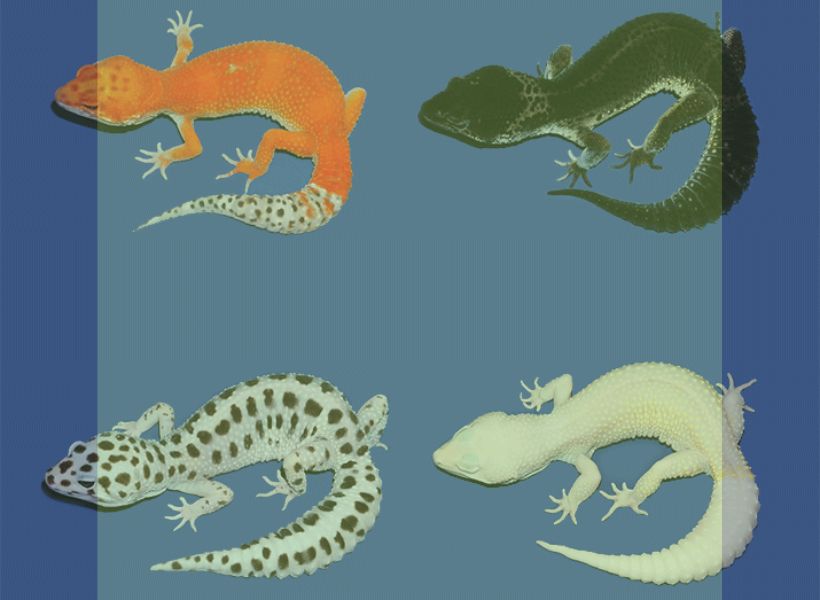
How To Identify A Genuine Lemon Frost Leopard Gecko
Genuine Lemon Frost geckos display a vibrant lemon yellow hue across their bodies and tails, often accompanied by a pastel-like appearance with white cells or black dots.
Breeders rely on specific genetic markers and breeding history for identification, seeking verification from experts like reptile breeders Steve Sykes and Howard Hughes Medical Institute Investigators. Collaboration with reputable breeders and geneticists is essential for accurate verification.
Breeding And Genetics Of The Lemon Frost Morph
The Lemon Frost morph in leopard geckos results from selective breeding and genetic mutation. These geckos are homozygous for the mutated gene, determining their unique phenotype.
Traits of the Lemon Frost morph are inherited through specific allele combinations, influencing coloration and skin patterns.
The intentional breeding programs focus on carefully selecting the desired traits. Understanding the genetics of Lemon Frost geckos requires knowledge of mutation, allele, and genome analysis.

Feeding And Diet Recommendations For Lemon Frost Geckos
Providing a balanced diet for Lemon Frost geckos is the key point of their health. Incorporate live insects like crickets, mealworms, and dubia roaches. Supplement their diet with calcium and vitamin D3 for bone health.
Keep in mind the gecko’s age, size, and activity level when establishing a feeding schedule. Ensure hydration through misting and a shallow water dish. Gut-loaded insects provide essential nutrients for vibrant coloration.
Proper Diet And Nutrition For Leo Lemon Frost Morphs
Maintaining the optimal health and coloration of Lemon Frost geckos heavily relies on a well-rounded diet.
Including a variety of gut-loaded insects in their diet offers necessary nutrients while dusting feeder insects with leopard gecko powdered supplements enhances their nutritional value.
Nutritional deficiencies can impact the health and coloration of Lemon Frost geckos, emphasizing the importance of dietary balance.
Supplementing their diet with leafy greens and occasional fruit treats adds diversity and contributes to the maintenance of their lemon-yellow coloration and overall vitality.
Feeding Frequency And Quantity
Lemon Frost geckos, including hatchlings, may need daily feeding for rapid growth. Adjusting the feeding frequency based on individual needs and activity levels promotes their better health.
Monitoring feeding quantity ensures they consume adequate nutrients for their size and age, contributing to vibrant coloration.
Observing their appetite and feeding behavior is crucial for maintaining their health. Adult Lemon Frost geckos should be fed appropriately sized insects every 2-3 days, ensuring their nutritional needs are met.
Tips For Feeding And Hydration
To support the hydration needs of Lemon Frost geckos, providing a dish of fresh water and regular misting is essential in captivity.
Optimizing their dietary intake involves observing feeding responses and adjusting feeding strategies. Supplementing their diet with calcium and vitamin D3 contributes to their overall health and coloration.
Providing varied, nutritious meals tailored to their feeding preferences is crucial. Additionally, maintaining clean feeding dishes and addressing any feeding challenges directly contributes to their well-being.
Housing And Enclosure Setup For Lemon Frost Geckos
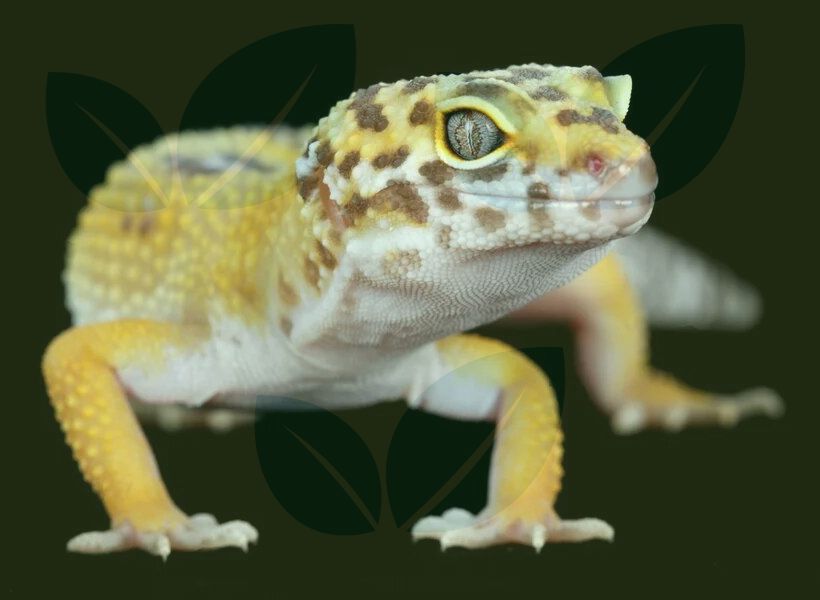
Proper housing for Lemon Frost geckos involves providing ample space for movement, along with hiding spots and climbing areas.
A temperature gradient within the enclosure helps geckos regulate their body temperature effectively. Suitable substrates such as reptile carpets or paper towels ensure cleanliness and maintenance ease.
Incorporating appropriate lighting with a heat source and UVB lighting is essential. Monitoring environmental conditions, including temperature and humidity, is crucial for the comfort and well-being of Lemon Frost geckos.
Make sure your Leopard Geckos are happy and healthy by using a good heat lamp to keep them warm, along with UVB lighting. Keep an eye on the temperature and humidity in their environment to make sure they’re comfortable.
Natural Habitat
Thriving in arid regions with rocky terrain and sparse vegetation, Lemon Frost geckos are nocturnal creatures seeking shelter during the day and emerging at night for prey.
Their natural habitat offers diverse temperature gradients, enabling effective thermoregulation. Understanding these behaviors informs their captive care needs.
Mimicking their habitat with appropriate temperature, humidity, and substrate conditions is crucial for their well-being and health.
Captive Habitat Requirements
In the habitat, leopard geckos require a temperature gradient for thermoregulation. Providing hiding spots is crucial for their well-being, as it reduces stress.
A natural substrate supports their natural behaviors and aids in maintaining cleanliness. UVB lighting is essential for calcium metabolism, and vital for the gecko’s health.
Spot-cleaning the habitat daily ensures a hygienic environment for the geckos. These habitat requirements are imperative for the thriving of captive leopard geckos.
Temperature And Lighting Needs
Lemon Frost Geckos require a warm and well-lit habitat. Maintain temperatures between 80-88°F during the day and allow a slight drop at night.
Provide a full-spectrum UVB light for at least 10-12 hours a day. Proper temperature and lighting mimic their natural environment, supporting their health and activity levels.
Common Health Issues And Concerns For Lemon Frost Gecko Morphs
Lemon frost geckos, including the exquisite Leo lemon frost morphs, may develop skin spots and tumors known as iridophores, making them susceptible to tumor formation due to a mutated gene.
These geckos can suffer from metastasis and even cancer such as melanoma. As a result, they might exhibit tumor growth, impacting their health. This necessitates further research and diagnostics to better understand and address these health concerns.
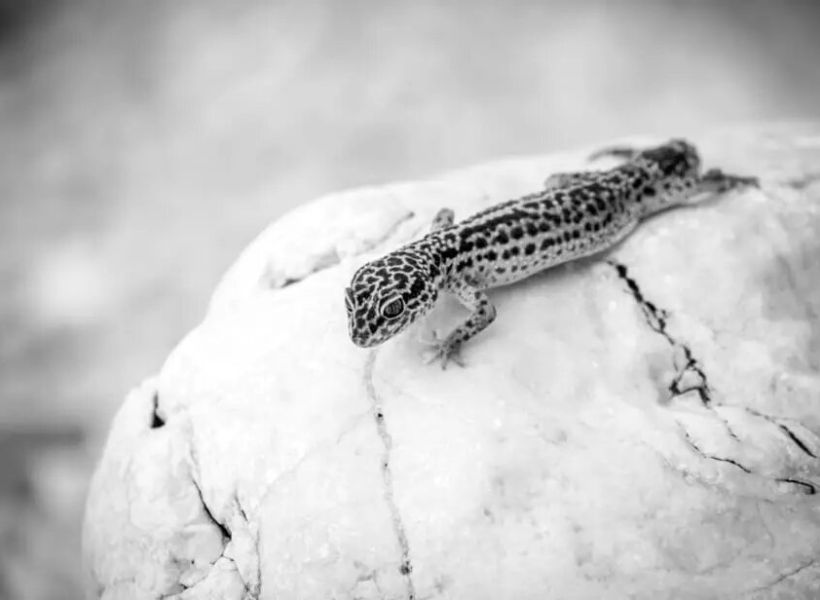
Care And Husbandry Considerations For Leopard Gecko Lemon Frost Morphs
Providing gecko lemon frost morphs with a suitable temperature gradient is imperative for their well-being.
These geckos also require hiding spots in their habitat to alleviate stress. Utilizing a natural substrate will help mimic their natural environment, and UVB lighting is essential for their calcium metabolism.
It’s beneficial to engage in a spot clean of the habitat daily to maintain a healthy living environment for these captivating creatures.
Handling And Interacting With Lemon Frost Leopard Gecko Morphs
Interacting with leopard geckos, including the fascinating lemon frost morphs, can help build trust and familiarity.
Properly supporting their bodies during handling is essential to avoid stress and injury. Handling may even promote bonding and trust, as these geckos may display unique behaviors when gently interacted with.
Creating a comfortable environment for them and approaching with care can greatly enhance the interaction experience.
Tips For Handling And Interacting With Your Gecko Lemon Frost
When handling your lemon frost gecko, supporting its body properly is essential for its well-being.
Gentle interaction can help foster trust and familiarity. You may observe unique behaviors when handling, which can aid in building a bond of trust.
Through proper handling, you can promote bonding and trust with your gecko lemon frost, further strengthening your connection with these fascinating creatures.
FAQ About Leopard Gecko Lemon Frost
Can Leopard Geckos Have Lemon?
Leopard geckos cannot consume actual lemons as part of their diet. The “Lemon Frost” variation of leopard geckos gets its name from the bright yellow and white coloration. It is important to feed them a proper diet consisting of live insects like crickets and mealworms. Researching their care and nutrition is crucial before bringing one home.
Are Lemon Frost Leopard Geckos Cancers Similar To Human Melanomas?
No, Lemon Frost Leopard Geckos are not cancers like human melanomas. They are a morph of the Leopard Gecko species resulting from selective breeding. Their unique pattern and coloration make them highly sought after by reptile enthusiasts. Proper care and a healthy environment are essential for their well-being.
How Long Do Lemon Frost Leopard Geckos Live?
Lemon Frost Leopard Geckos typically live around 6 to 10 years in captivity with proper care. Providing a suitable environment, a balanced diet, and regular veterinary check-ups contribute to their well-being, ensuring a longer and healthier life span as cherished members of the household.
Do Leopard Geckos Like Cold?
Leopard geckos, being cold-blooded creatures, require a temperature gradient in their habitat. Maintaining an ideal temperature range of 75-85°F during the day and 70-75°F at night is crucial for their well-being. While they need a cooler area for thermoregulation, extreme cold temperatures should be avoided.
Final Thought 💭
Now, you have a good knowledge of the Leopard Gecko Lemon Frost, which is a captivating and exquisite morph with unique characteristics.
Its distinctive features and charming personality make it a delightful choice for reptile experts seeking a special and visually appealing addition to their collection.
With proper caring, you can enjoy the beauty and companionship of these stunning geckos for years to come.

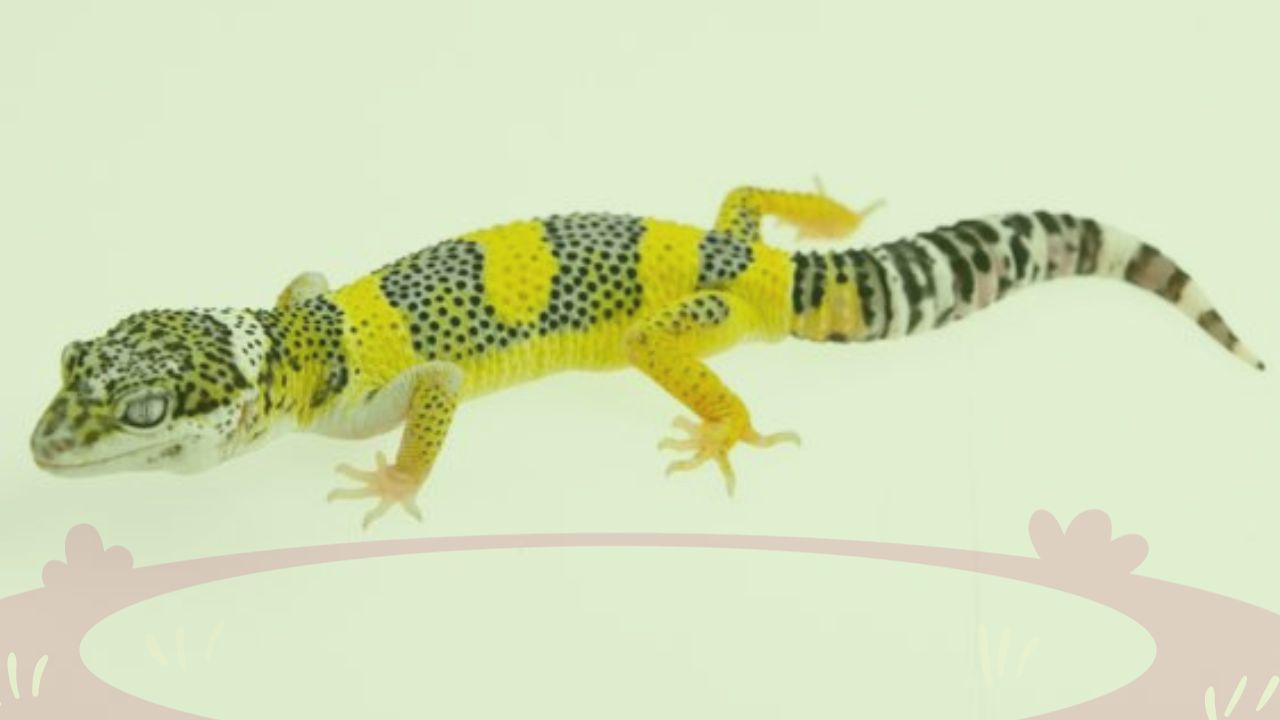

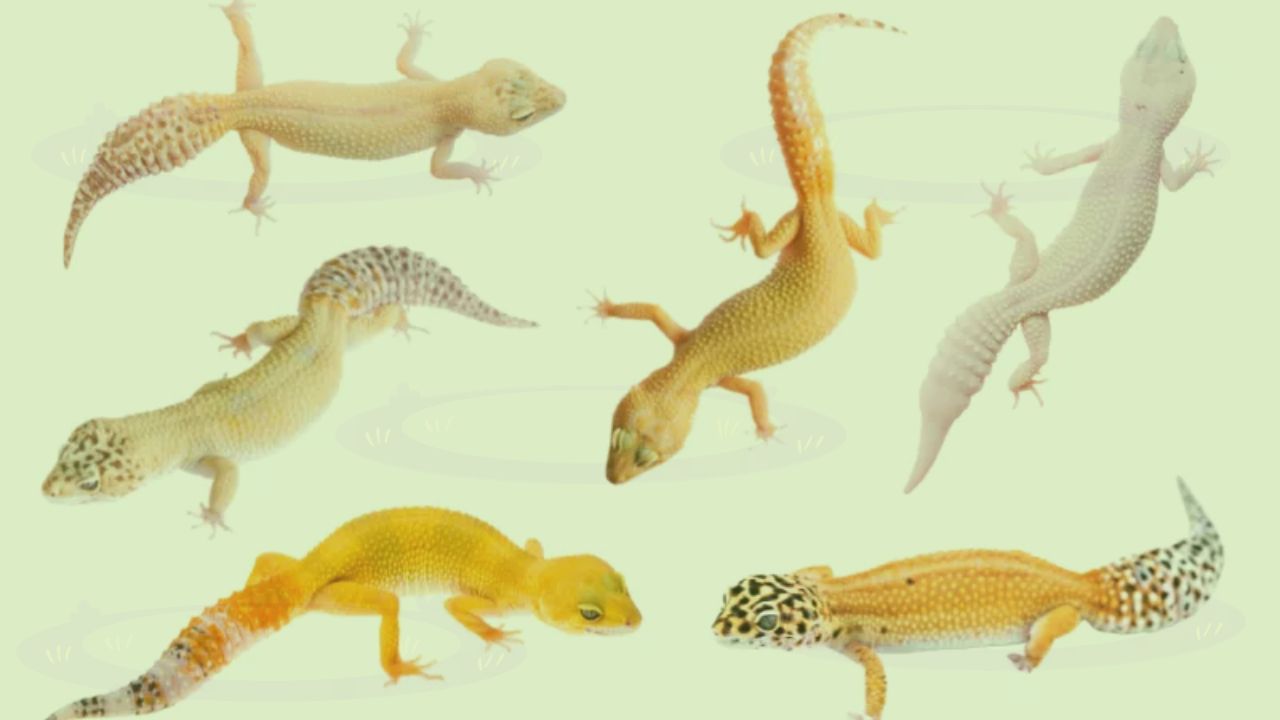

Leave a Reply